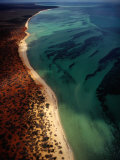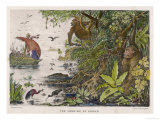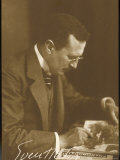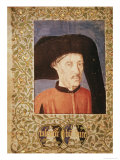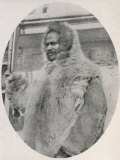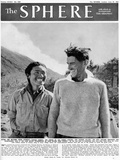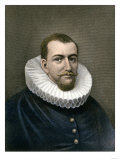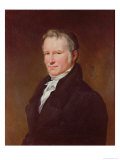|
|
|
|
|
Dirk Hartog
bap. 10-30-1580; Amsterdam
buried. 10-11-1621; Amsterdam
Dirk Hartog's trading expedition for the Dutch East India Company (VOC) was the second European group to land on Australia, and the first to land on the west coast of that continent. Hartog left a metal plate inscribed with dates and expedition information which is displayed in the Netherlands.
Hartog was using a strong westerly wind found in the Southern Hemisphere called the “Roaring Forties”, the latitudes between 40° and 50° south. The strong wind is due to atmospheric circulation of hot air rising at the Equator and pushed toward the poles by cooler air rushing to the Equator. The wind had first been described by another Dutch trader, Hendrik Brouwer, as a fast route from South Africa to Java.
|
|
|
|
|
|
|
|
|
|
Prince Henry the Navigator
b. 3-4-1394; Oporto, Portugal
d. 11-13-1460; Sagres
Prince Henry the Navigator, a younger son of Portugese King John I, acquired his moniker because of his insistance that sea captains keep careful and complete records of voyages, thus laying the foundations for the Portugese Empire and an example of early adaptation of scientific inquiry. He also began what was to become the University of Lisbon.
• Prince Henry the Navigator: A Life
|
|
|
|
Matthew Henson
b. 8-8-1866; Nanjemoy, Maryland
d. 3-9-1955; The Bronx
In April 1909, Matthew Henson and Lt. Robert Peary became the first people to reach the North Pole. Henson was first hired by Peary in 1887 as a servant on an expedition. He eventually rose to the rank of field assistant. Four years later, in 1891, Henson and Peary set out on the first of several trips to the cold, forbidding ice of the Artic. On their sixth and final trip, they finally made it to the North Pole. Following their triumph, Peary was made an admiral and received worldwide acclaim, while Henson was virtually ignored. Six years later, Henson was working as an attendant in a parking garage. It was only in 1954, a year before he died, that he was honored by President Dwight Eisenhower in a White House ceremony. Matthew Henson is buried in Arlington National Cemetery. (text from an out of print poster)
• Great Black Innovators
• Did you know that Matthew Henson's great-grand uncle was Josiah Henson- a significant figure in the Underground Railroad prior to the American Civil War?
• Onward: A Photobiography of African-American Polar Explorer Matthew Henson
|
|
|
|
Father Louis Hennepin
b. 5-12-1626; Ath, Belgium
d. c. 1705; Rome
Louis Hennepin, a Catholic priest and missionary of the Franciscan Recollect order, explored the western part of New France in interior of North America with René Robert Cavelier, Sieur de la Salle. There are many places named after Hennipen in the midwest area of the United States.
Hennepin reported Niagara Falls to the world, and Hannibal, Missouri historians claim that he was the first European to step foot in what is today Hannibal.
• Discovery and exploration of the Mississippi valley: with the original narratives of Marquette, Allouez, Membré, Hennepin, and Anastase Douay.
|
|
|
|
Bjarni Herjolfsson
f. 10th century - Norway
The Norseman Bjarni Herjolfsson, who sighted the mainland of the Americas in 985, is believed to be the first European to see North America.
|
|
|
|
|
|
|
Sir Edmund Hillary
b. 7-20-1919; Auckland, New Zealand
d. 4-18-2002; Auckland
On 29 May 1953, Edmund Hillary and Nepalese Sherpa mountaineer Tenzing Norgay became the first climbers confirmed as having reached the summit of Mount Everest.
Hillary was named by Time magazine as one of the 100 most influential people of the 20th century.
|
|
|
|
Henry Hudson
b. 9-12-1570; England
d. 1611; Hudson Bay, Canada
Henry Hudson, funded by merchants, made four voyages searching for a sea passage to China: 1607, 1608, 1609 and 1610-11. He sailed further north than any previous explorer and was set adrift in the bay that bears his name by mutineers on the last voyage.
The 1607 voyage to the west across the Atlantic, and in 1608 voyage to the east around northern Russia were funded by the English controlled Muscovy Company; in both voyages Hudson was turned back by ice.
The 1609 voyage was financed by the Dutch East India Company who instructed him to again attempt the easterly route. When turned back by ice Hudson went west across the Atlantic, based on the reports of people like John Smith and Samuel de Champlain who were probably relating Native American information about what we know today as the Great Lakes.
Hudson reached the Great Banks (south of Newfoundland), Nova Scotia, Cape Cod, Chesapeake and Delaware Bays. He entered the estuary of the river that bears his name (already on the charts by Giovanni da Verrazano in 1524), sailing as far north as current day Albany, New York. This voyage and trading furs with Native Americans were used by Dutch to claim the area as New Netherlands.
• North American Continent poster
• Hudson River poster
• Lower Manhattan Culture Map poster
|
|
|
|
|
|
previous page | top | next
history > exploring > Great Explorers List | a | b | c | d | e | f | g
| H | i-j-k | l | m | n-o | p | q-r | s | t-u | v | w-x-y-z < social studies
|
|
I have searched the web for visual, text, and manipulative curriculum support materials - teaching posters, art prints, maps, charts, calendars, books and educational toys featuring famous people, places and events - to help teachers optimize their valuable time and budget.
Browsing the subject areas at NetPosterWorks.com is a learning experience where educators can plan context rich environments while comparing prices, special discounts, framing options and shipping from educational resources.
Thank you for starting your search for inspirational, motivational, and educational posters and learning materials at NetPosterWorks.com. If you need help please contact us.
|
|
|












